Flamanville, nestling south of La Hague on the west coast of the Cotentin peninsula, welcomes you to its breathtaking rural and coastal landscapes. Perched on a granite headland, the village, with its harbour, has seen many different eras. From granite quarries to the nuclear industry, the cliffs of Flamanville have witnessed major changes.
The town has a population of over 1,700 and stretches for over 3 km from north to south, with a number of outstanding sites making up its unique identity.
Located on a granite cape at the tip of the Cotentin peninsula, Flamanville was a peaceful village close to a fishing port. From granite quarries and iron mines to nuclear industry, the Flamanville cliffs have seen many upheavals. Today, Flamanville is an industrial village in the heart of the wild nature of Cotentin.
For more than a century, the Diélette iron mine provided a living for an entire community. In the 1930s, due to lack of labor, Flamanville welcomed the families of Italian, Spanish, Polish and Czechoslovak miners. Although the work was hard, the wages were much better than on surrounding farms. The miners’ families were housed in the corons of the Cité Sainte-Barbe.
The Diélette mine was one of the most famous in France, with the particularity of being dug under the sea. Once located on the road that now leads to the EDF power station, it was exploited from 1877 before stopping definitively in 1962.
The EDF Flamanville power plant was then built on a 120 hectare site, half of which was reclaimed from the sea. With two production units with a power of 1,300 megawatts each, EDF Flamanville produces 18 billion kilowatt hours per year, or 4% of electricity in France, and meets 69% of the region’s electricity needs.
The plant employs around 650 EDF staff, to which can be added up to 1,500 external service providers during scheduled maintenance shutdowns.
In May 2006, following a public debate, EDF decided to build the first EPR (European Pressurized Water Reactor) nuclear reactor: the Flamanville 3 nuclear power plant. Flamanville then became the first French town to host an EPR.
Hamlet attached to the town of Flamanville, Diélette was once a commune in its own right, with its church, cemetery and shops.
Historically, Diélette marina fulfilled a commercial mission, providing links with the Channel Islands. Later, its major contribution to the exploitation of granite quarries and the export of iron ore led to the construction of a major dike, reinforcing its infrastructure.
The closure of the mine in the 1960s left room for recreational fishermen, who decided to occupy the empty space. Now, the marina hosts shops and restaurants for tourists and regulars.
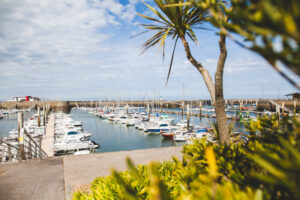
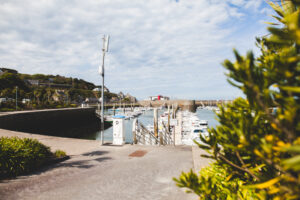
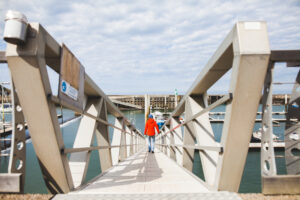
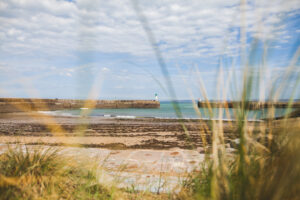
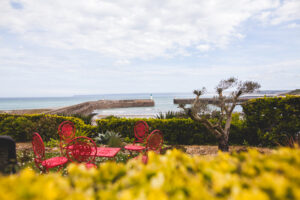
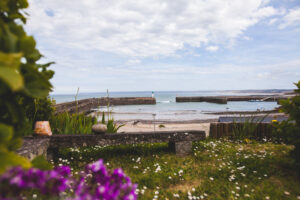
Le Trou Baligan is a famous cave located at the foot of the Cap de Flamanville, between Biédal and La Cabotière coves. From 1977, the construction of the EDF power station resulted in the disappearance of Trou Baligan. This fault, which plunged almost two hundred meters into the heart of the cliff, has long been associated with several legends.
When the sea rushed into the hole, it emitted terrifying noises, fuelling the legend of a dragon that terrorised the local population more than 1,500 years ago. One day in 448, the town’s patron saint, Germain le Scot, also known as Saint-Germain de la Rouelle or Saint-Germain de la Mer, disembarked from Ireland and defeated the beast, the symbol of paganism, thus converting the population to Christianity. The monster remained petrified in a block of granite, veined by the rust of iron ore whose colour recalled the blood of the innocent sacrificed.